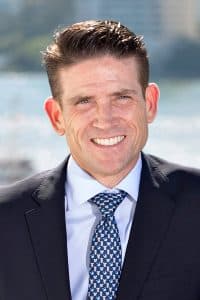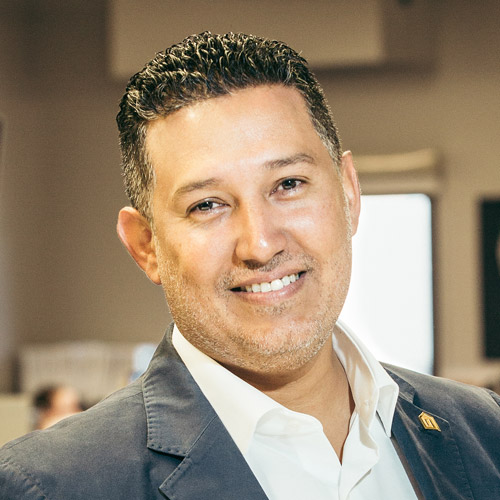
Carlos Torres de Navarra doesn’t like to dwell on what he has already done, but rather focus on what he has yet to accomplish.
As Carnival Cruise Line’s vice president of commercial port operations, Torres de Navarra oversees homeport and port-of-call operations for the cruise line’s fleet, and establishes key agreements and strategic relationship.
Torres de Navarra has been with the company for a decade, having started with Carnival in the global port and destination development department. He describes himself both professionally and personally as a “sort of hybrid.”
He got his bachelor’s and master’s degrees in business administration from the University of Miami, but one of his primary responsibilities for Carnival has to do with port operations. The other is related to strategic planning.
“While our guests are having fun aboard Carnival ships, I oversee all that happens in the homeport and the ports of call,” he says. “That means everything from the ships sailing on time to managing relationships with port officials and regulators.”
He also leads long-term port destination development projects for the brand and on occasion represents the Carnival Corporate brands in North America, the Caribbean, and Mexico. “Many of the decisions I make today will have an impact in ten or twenty years from now,” he says. “I negotiate contracts that have a long-term outlook and will bear fruit for many years to come.”
Torres de Navarra is a hybrid as a result of his background and upbringing, as well. “Relatives on my father’s side were transplants from Spain who had settled in Cuba,” he says. “As for my mother’s family, half of it is Cuban and the other half is from Boston—of Irish and Norwegian descent.”
Most people have a pretty good idea of what they will be doing in the next few months—perhaps taking a vacation to the Caribbean. But Torres de Navarra is figuring out where the company will be two or three decades. The cruise industry is growing tremendously, and one particularly sensitive issue is finding homes for all the ships, the existing ones and those that will be built in the future.
“Think of a parking garage,” Torres de Navarra says. “Everybody wants a spot on the first floor, but as the space gets filled, people have to settle for less desirable locations. My job is to make sure that our ships are in the best spots at the various homeports. We recently extended a contract with the Port of Miami for another twenty years, and I am proud to have been part of that deal.”
Expanding the Seas
Torres de Navarra plans port strategy across different regions as well. The recent expansion of the Spruce Goose Geodesic Dome in Carnival’s Long Beach, California, cruise facility will boost the company’s capacity on the West Coast.
“This is a huge white dome that was once home of Howard Hughes’s Spruce Goose airlift flying boat,” Torres de Navarra says. “The part of the dome we don’t use now is being used in the film industry for film sets.”
The terminal, where the original Queen Mary cruise ship is located, has been using less than half of the dome for its operations. Having access to the entire place will make it possible for new passengers to embark at the same time that disembarking passengers exit the ship—currently, new passengers need to wait at the port until disembarking passengers leave the ship.
Presently, Carnival launches cruises to Baja California, the Mexican Riviera, Hawaii, and Alaska from Long Beach.
“We will be able to base bigger ships than the ones we have now,” Torres de Navarra says. “This is a great opportunity to create flexibility for Carnival and to continue expanding our operations in the Pacific coast.”
Another big step for Carnival is the development of a private destination in the Bahamas.
“All destinations have something unique to offer, and our intention is to continue to develop and create a demand for the port experience.”
Carlos Torres de Navarra
“We are the only cruise line that doesn’t yet have a private destination in the Bahamas,” Torres de Navarra says. “But we hope to change that soon. For the last seven years, we have been working toward the creation of a new Bahamian port that will give us the freedom to improve upon the already great experience that the Bahamas offers to our guests.”
The private destination will be located in Grand Bahama. “The site we have selected is a beautiful place, with outstanding beaches and nature preserves,” he says. “Our goal is to develop the next generation in private destinations. It will be like nothing that exists in the cruise industry today or coming on line in the next couple of years.”
In that respect, the company plans to play a lead role in the development of the area, making it attractive to both cruise passengers and local partners.
“We want our guests to immerse themselves in the destination,” Torres de Navarra says. “All destinations have something unique to offer, and our intention is to continue to develop and create a demand for the port experience. A good example of a port attraction that was co-developed with the cruise industry is the Mystic Mountain Bobsled in Ocho Rios, Jamaica, inspired by Jamaica’s Olympic bobsled team. It includes a chairlift to see the rain forest from seven hundred feet above. Combining the natural beauty of the place with its history and culture results in an unforgettable experience.”
Attractions like Mystic Mountain generate interest in the destination and increase the overall demand for the trip. On the other hand, initiatives that do not fit with the location and the landscape generally don’t succeed. “Like the idea of creating an ice bar in a tropical jungle setting,” Torres de Navarra says, laughing. “That didn’t end up well at all.”
Let the Good Times Sail
While an attractive destination is important, Torres de Navarra emphasizes the importance of having a good time on board, too. “We specialize in offering the best family experience in a great setting,” he says. “Take our newest ship, Carnival Vista, launched in May 2016. It has the first IMAX Theatre at sea. I took a cruise with my family, and we saw the last Star Trek movie before it was released in theaters.”
There is also a microbrewery on board, the fleet’s largest water park, a groundbreaking aerial attraction called SkyRide, and a variety of restaurants.
“But we want to raise awareness about the fact that there is a lot more than eating on a cruise ship,” Torres de Navarra says. “We are giving passengers more choices than ever before, so they can experience a vast range of activities both on board and ashore.”

